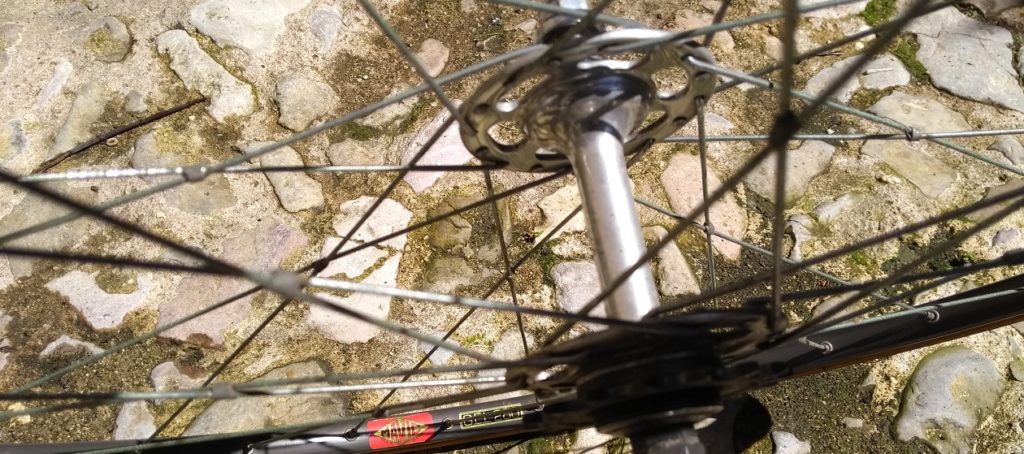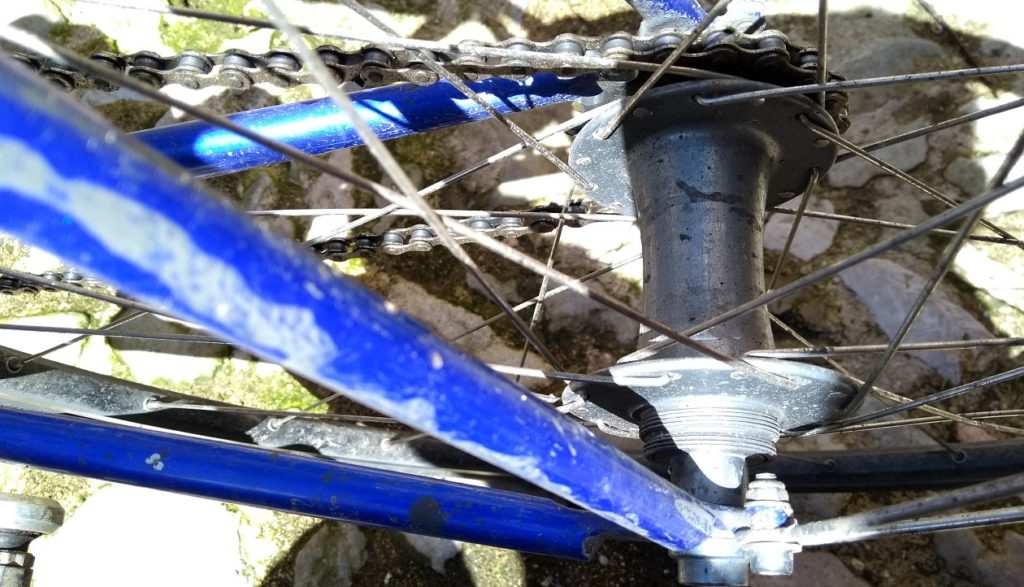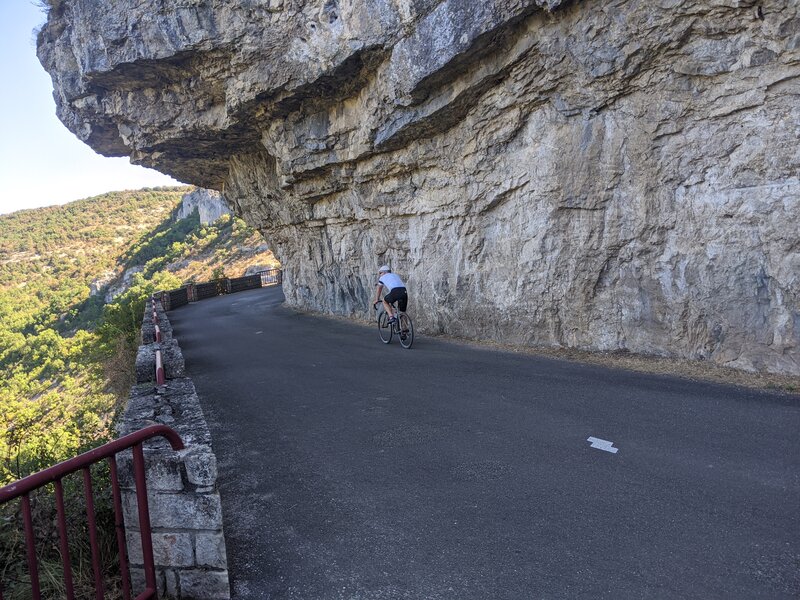Goldtec Track Hub Ultra Long Term Review
The rear hub is one of the few parts on a fixie which is different to a geared bike, so this review of my Goldtec Track Hub deals with one of the specialist parts you’ll need.
I raced on the track for years, and my hubs of choice were always the classic Campagnolo Record Large Flange Track Hubs. They were super smooth, built into a fantastic wheel, were endlessly rebuildable, looked good and were what everyone who could afford them was using. They were never much good on the road though simply because they have little in the way of seals on the bearings. That’s because track riders don’t need good sealing because they never ride in the wet. It makes sense on racing hubs because seals create drag, so if you can manage without, you should. It’s telling that if you ride Campag track hubs on the road it voids the warranty.

Like a lot of track riders I have always ridden a fixed on the road for training, mostly in the winter. For years I used old racing hubs but had endless problems with dirt getting in the bearings, and got mighty fed up of carrying a massive 15mm spanner on rides in case I punctured and needed to remove the wheel. Eventually I decided that I should get something more suited to the task at hand, and at the time the growing fashion for riding a fixed on the road meant that new products were emerging to meet demand.
Enter the Goldtec Track Hub. It’s not a complicated bit of kit – it’s just a lump of nicely machined and anodized aluminium rotating on cartridge bearings – hardly rocket science. However it does have some nice design features which makes it much better for road duties than traditional track racing hubs:
- The cartridge bearings have proper seals, so there’s no problem riding it through the worst a European winter can throw at you. That means that I wouldn’t race on this hub – it’s not as smooth as my old Record hubs, but that’s the price you pay for all weather reliability. Since I bought this hub around 10 years ago, Goldtec have made a higher spec version with ceramic bearings which I’m sure would be fine for racing duties.
- It attaches to the frame using allen key bolts. It’s a neater solution than traditional track nuts, but for me what’s more important is that I can remove the wheel using my normal multi-tool. I no longer have to carry a massive 15mm spanner with me.
- It comes in a range of drillings. I don’t weigh much and never have trouble with wheels so I don’t need my wheels to be built for a huge sprinter. Mine is 28 hole which is fine for me, if you need more, they can do that too.
- The axle ends are oversized and machined flat so that they slot into the dropouts. The purpose is to prevent the axle turning when you tighten the allen key bolts securing the hub to the frame. It works but there’s a disadvantage, which is that when you refit the wheel the axle has to be correctly orientated which is quite a faff – see the pics below. I’d sooner have a conventional round axle.

Clever machining on the axle
- It can be altered to different widths. I bought mine as a standard 120mm track hub, but later swapped my frame to one with an unusual (for a fixie) 130mm spacing. Goldec supplied a pair of longer colour matched axle ends which converted the hub in 5 minutes. This is especially useful if you’re converting a road bike which will normally be spaced at 130mm or 135mm if it’s a mountain bike.
- Unlike a racing hub it’s threaded on both sides so you can fit two different sized cogs and swap the wheel over while you’re on a ride. I’ve never bothered doing that, but the option’s there should you want it. For me what’s more useful is that should I ever strip the thread (I once did that in a race to a Campag Record) I can just use the other side.


So what’s the Goldtec Track Hub like in use? Well it just works. After 10 years of winter riding, tens of thousands of miles and two replacement rims it’s needed no attention at all. It’s still on the original bearings, which frankly is normal for good quality cartridge bearings, but not all manufacturers fit good quality bearings. If they do die which I guess they will eventually, it’s easy to get replacements cheaply from any bearing supplier and fit them yourself.
Goldtec do a matching front hub too of course, but as I have an apparently endless supply of front road hubs, I only bought the rear. For the retro geeks among you, the front I’m using is a classic Mavic 501 which I bought second hand in the 1980s. It’s still going strong on the original bearings.
So if you want a rear hub for riding a fixed on the road it’s hard to find fault with the Goldtec Track Hub.
While we’re on the subject of riding fixed wheel, I still use mine now we live in the hills of SW France. The gradients are gentler than I’m used to, so it works surprisingly well. It means that if you want a cycling holiday on a fixed wheel I can sort you out! You’d need to be pretty fit and your bike would need to have brakes, preferably two, but get in touch if you’re interested.
This review of my Goldtec Track Hub has the usual caveat. I bought the hub with my own money and have no connection to the manufacturer. They don’t know I’ve written this, but now it’s done I’ll tell them. I also believe in “real world” reviews. I took all the pics today of the hub as it currently is, complete with the grime of winter riding. I like to think it makes what I say more useful – I’m not a journo riding around on some kit for a couple of weeks, illustrated by a flattering pro quality shoot. This is what the gear really is like to live with in the long term and my pics show how it’s survived.
FOLLOW US ON INSTAGRAM





